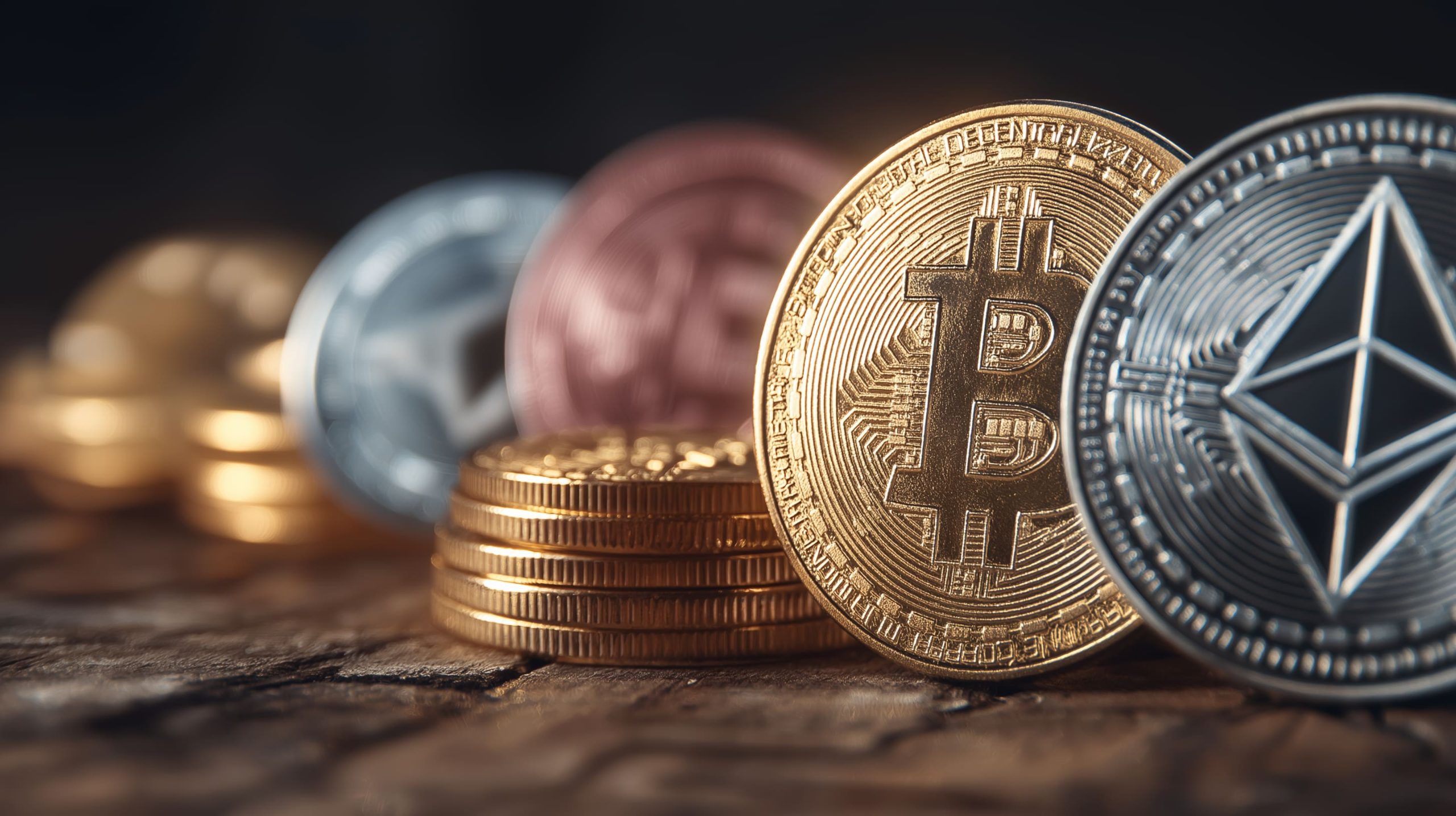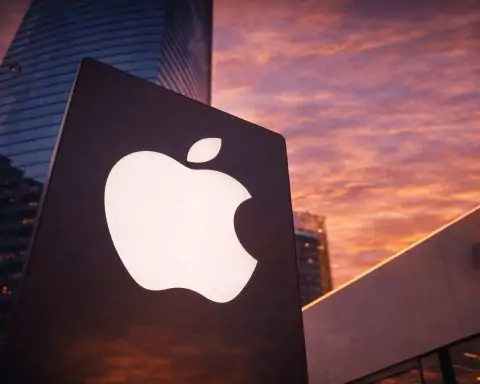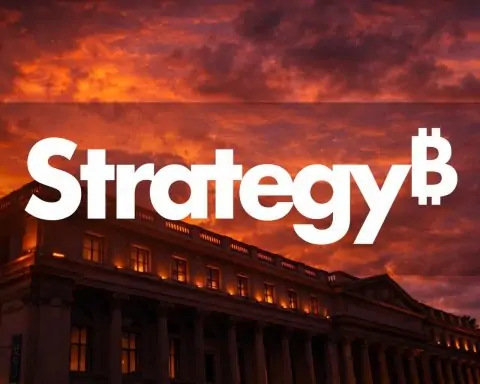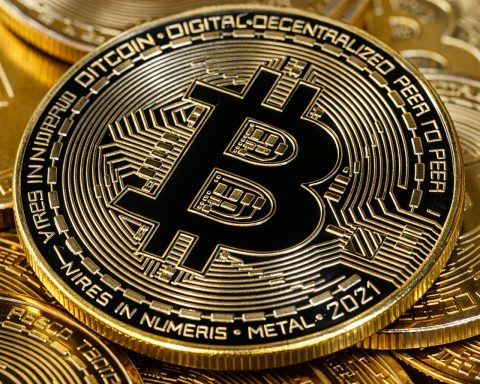- Trump’s CRO Bet Sends Token Soaring: Donald Trump’s media group struck a deal with Crypto.com to launch a Cronos (CRO) treasury venture, pledging a $105 million CRO purchase – news that sent the token surging ~30% [1] [2]. Crypto.com will invest $50M in Trump’s firm via a SPAC listing, deepening ties between a political brand and crypto markets [3] [4].
- DeFi & NFT Sectors Heat Up:DeFi total value locked jumped ~3.3% this week to $149.2B, with Lido leading at $38B [5], while NFT markets showed signs of revival – July sales hit $574M (second-highest of 2025) and weekly volumes in late August topped $93M, their best in a year [6]. A single Pudgy Penguins NFT fetched $244,000 as blue-chip collections like CryptoPunks and Bored Apes saw renewed activity [7]. NFT heavyweight Pudgy Penguins even revealed plans for a 2027 IPO amid a projected $50M revenue year [8] [9].
- Regulators Move on Crypto Globally: In Washington, a bipartisan Digital Asset Clarity Act advanced in Congress to finally define when tokens are securities vs. commodities [10]. The SEC launched a “Project Crypto” task force to refine token rules [11], even as U.S. agencies quietly eased some crypto banking curbs under a more industry-friendly climate [12]. Across the Atlantic, Europe’s MiCA regime is in force and being actively enforced [13], with EU regulators consulting on DeFi oversight [14]. In Asia, Japan’s finance minister endorsed crypto’s role in a diversified portfolio [15], Hong Kong opened a “Stablecoin Advancement Lab” to pilot HKD- and USD-pegged stablecoins [16], and even China’s think-tanks are exploring yuan-backed stablecoins for trade [17].
- Big Corporate Plays & Investments: Crypto corporate activity boomed. Trump Media’s Cronos play grabbed headlines, while Hong Kong gaming firm Boyaa Interactive spent $33M of its reserves to buy 290 BTC – boosting its treasury to ~3,670 BTC – as a bold bet on Web3 gaming [18]. “The purchase and holding of cryptocurrencies constitute an important foundation” for Boyaa’s gaming pivot, the company said in its disclosure [19]. In the Web3 gaming/metaverse arena, startup Wilder World partnered with Samsung at Gamescom to launch a blockchain FPS game with a $100K esports tournament, signaling that “Web3 gaming will be a mainstream force in the next wave of entertainment,” said co-founder n3o [20]. Traditional finance is embracing crypto too: interbank giant SWIFT began live trials settling payments on Ripple’s XRP Ledger and Hedera Hashgraph [21] [22], a move one report said “could mark one of the most significant integrations of blockchain into traditional finance” if it proceeds [23]. Wall Street’s crypto on-ramps are multiplying – Circle raised over $1B in a June IPO and Bullish exchange listed on the NYSE [24], while just this week Grayscale filed for a spot Avalanche (AVAX) ETF and an Injective (INJ) ETF entered SEC review [25]. Even a novelty Trump memecoin ETF was filed, betting on political hype [26].
- Blockchain Tech Upgrades (L1s & L2s):Solana shattered speed records, briefly hitting 107,540 TPS in an Aug 17 mainnet stress test [27] – an artificial load using “noop” transactions but one that suggests Solana could handle 80k+ TPS in real conditions [28] [29]. Typical daily throughput (~3,000 TPS) is already far above most rivals, and SOL’s price jumped 5% on the feat [30] [31]. The network even sustained an all-time high 2,300+ TPS during the frenzy of Kanye West’s token launch (more on that below) [32] [33]. “Good luck bears,” quipped Helius CEO Mert Mumtaz at Solana’s performance beating expectations [34]. Over on Cardano, founder Charles Hoskinson touted the upcoming “Midnight” sidechain for data privacy and confidential transactions, expected to go live soon [35]. Cardano’s community just held its first on-chain governance vote to allocate $71M from its treasury toward core development – a milestone in decentralization [36]. Ethereum’s developers, fresh off the recent Dencun upgrade, are already planning a “Pectra” update for early 2025 to further cut fees and boost Layer-2 synergies [37]. Meanwhile Bitcoin’s Lightning Network quietly hit a record with over 7,000 BTC capacity improving scalability, and Polkadot and Cosmos announced tweaks (from faster finality to new interop standards) to keep their multi-chain ecosystems growing.
- Token Market Rollercoaster: It was a wild ride for crypto prices. Over the weekend, an anonymous whale dumped 24,000 BTC (>$2.7B), triggering a flash crash that briefly sent Bitcoin plunging below $111,000 before it stabilized around $112–113K [38]. The cascade wiped out some $550M in leveraged positions and erased gains from prior bullish news, though some analysts saw a silver lining. “A flush of long liquidations can reset the market for a cleaner bounce,” CoinDesk noted as BTC recovered [39]. Ethereum, meanwhile, hit a fresh peak – briefly crossing $4,900 to notch a new all-time high before easing to the mid-$4,700s [40]. ETH is up ~9% on the week as capital rotated from BTC to altcoins. In derivatives, XRP futures open interest on the CME exploded to $1B (the fastest any contract has hit that mark) amid surging institutional demand [41] [42]. XRP’s spot price swung wildly between $2.84 and $2.98 as big players jumped in on volatility, but held critical support around $2.84 with signs of accumulation [43] [44]. Other majors saw action too: Cronos (CRO) spiked to $0.20 on the Trump news [45], Solana (SOL) rallied on its tech milestones, and memecoins grabbed headlines – notably Kanye West’s surprise $YZY coin launch on Aug 21. The Solana-based “Yeezy Money” token rocketed to a $3B market cap within hours as fans piled in, only to crash 60% from its peak amid accusations of insider dumping [46]. On-chain sleuths found 94% of YZY’s supply sat in insider wallets (87% in one multisig) at launch, raising red flags [47]. The $YZY frenzy – much like Argentine President Javier Milei’s ill-fated $LIBRA token that hit $4B then imploded earlier this year – underscores how quickly hype can turn to bust. Regulators are surely watching these celebrity-fueled manias; U.S. authorities even froze $57M linked to the LIBRA scheme after fraud allegations [48] [49].
- Security Scares & Hacks: Not all the news was positive – crypto’s perennial battle with hackers continued. Blockchain sleuths reported that wallets tied to at least three high-profile exploits unloaded over $72M in stolen ETH into the rallying market this week, taking advantage of higher prices to cash out ill-gotten funds [50] [51]. One DeFi exploiter associated with Radiant Capital netted an extra ~$48M by timing ETH sales during the surge, highlighting ongoing post-hack laundering operations [52] [53]. Phishing attacks also struck users: just days ago a malicious site scam drained roughly $1M in tokens and NFTs from an unwitting crypto investor in a single signing, using a crafty batch transaction exploit (Ethereum’s new EIP-7702) to hijack wallet permissions [54] [55]. Security experts warned that over 90% of EIP-7702 delegation requests in recent months were malicious, urging users to double-check domain names and signature prompts to avoid such one-click wallet drains [56]. Even top exchanges sounded alarms: Binance’s CEO issued a community warning about a new phone-based social engineering scam, where fraudsters posing as support reps trick users into changing API keys – a reminder that crypto’s human attack surface is as vulnerable as its code [57]. On a brighter note, industry players are responding with increased vigilance: major protocols are funding more audits and bug bounty programs, insurers report rising demand for crypto coverage, and law enforcement globally is collaborating to track and freeze stolen assets. The takeaway for everyone in crypto: amid the bull-market excitement, stay vigilant – robust security practices are more critical than ever to sustain trust and protect the gains of 2025 [58] [59].
Major Developments in DeFi, NFT & Gaming
DeFi momentum builds: The decentralized finance sector saw moderate growth during August’s last week, buoyed by climbing crypto prices. Total value locked in DeFi protocols rose about 3.3% to roughly $149.2 billion [60]. Liquid staking leader Lido Finance led the pack with over $38.1B in assets staked [61], reflecting continued appetite for staking yields as Ethereum’s Shanghai upgrade (enabling withdrawals) has bedded in. Lending and DEX platforms also benefited from renewed capital inflows. On-chain activity ticked up across multiple chains – a sign that traders are putting idle crypto to work amid the market uptrend. Industry analysts note that a large chunk of new TVL came from appreciating asset values rather than new deposits, but directionally the trend is positive. Real-world asset (RWA) tokenization also hit new milestones: the on-chain market for tokenized Treasurys and cash equivalents now exceeds $7B as institutional players pour into asset-backed stablecoins and yield products [62].
NFT market revival: After a prolonged slump, NFTs are showing signs of life. July’s NFT sales volume reached $574 million, the second-highest month of 2025 [63], and the rebound is sustaining into late August – for the week ending Aug. 25, NFT sales topped $93M, the strongest weekly total in a year [64]. Average prices per sale have climbed (over $113 on average in July) as collectors cautiously return [65]. Market breadth is also improving: while Ethereum still leads with ~$56.6M in weekly NFT sales, alternative chains like Solana and Polygon are now neck-and-neck for the #2 spot [66], indicating multi-chain growth. Blue-chip collections have regained some shine – CryptoPunks generated $2.8M in weekly sales (with several Punk NFTs selling in the $180K–$214K range) [67], and a Pudgy Penguins collectible sold for $244,000, one of the highest Penguin sales on record [68]. Other top collections like Bored Apes and Azuki saw renewed trading, while newer projects (e.g. Courtyard NFTs and various gaming NFTs) drove high transaction counts at lower prices [69]. Overall, the NFT ecosystem appears to be entering a more mature phase – “volatile yet vibrant” as one report put it – mixing high-end confidence with broader-base activity [70]. Cautious optimism is creeping back, helped by projects delivering real utility and revenue beyond just hype [71].
Pudgy Penguins plan IPO: A standout story in NFTs is the evolution of Pudgy Penguins from a 2021 profile-picture craze into a full-blown media and merchandise empire. CEO Luca Netz revealed that Pudgy Penguins is on track to earn $50 million in revenue this year through Web2 expansions – from toys in Walmart to children’s books and arcade machines – and now he’s eyeing the public markets [72] [73]. “I would love to [go public] in the next two years,” Netz told Decrypt, setting a target IPO by 2027 and adding he’d be “disappointed in myself” if it doesn’t happen – “hold me accountable,” he quipped [74]. Preparations are already underway: Pudgy’s team has consulted financial advisors and even helped propose a novel ETF that would track the Pudgy ecosystem’s NFT and token performance [75]. The company also launched its own Solana-based meme coin $PENGU (as a “Web3 passport” token for its community) and has courted public companies to consider holding $PENGU on their balance sheets [76]. If Pudgy Penguins pulls off a stock listing, it would be the first major NFT-native firm to IPO, potentially opening the floodgates for other Web3 brands. The move underscores how far the NFT space has come: “from quirky collectibles to serious business,” bridging crypto culture with traditional finance. It also reflects the broader IPO renaissance in tech – over 220 companies have gone public in 2025 (up 90% from the same period in 2024) [77], including several crypto firms, thanks in part to clearer regulations (more on that later).
Web3 gaming and metaverse gains: The intersection of gaming and blockchain made headlines at Gamescom 2025, one of the world’s largest gaming expos. Wilder World, a metaverse startup, wowed attendees by launching a new first-person shooter mode in its crypto-powered virtual world – notably in partnership with tech giant Samsung [78] [79]. To drum up excitement, Wilder World announced a $100,000 global esports tournament, with qualifiers running from Aug. 25 through September and a live finale next month [80] [81]. “The $100K tournament isn’t just about esports, it’s a global stage to show the world that Wilder World is building at the frontier of gaming and the metaverse,” said the co-founder known as “n3o,” adding that Samsung’s involvement validates their belief that “Web3 gaming will be a mainstream force in the next wave of entertainment.” [82] Thousands of Gamescom visitors got to experience the game and even claim Samsung-branded NFT souvenirs (POAP badges) that unlock playable items in Wilder World’s virtual city [83] [84]. The successful debut – alongside Wilder World’s earlier feats like selling out NFT “metaverse car” collections in minutes – shows that blockchain games are edging into the mainstream, closing the gap with traditional titles in production quality and player base. Beyond Wilder, the broader Web3 gaming space saw funding and user growth: fantasy sports NFT platform Sorare logged nearly 19,000 trades in one day, and new gaming projects are attracting users with affordable, fun collectibles [85]. Major publishers are taking note, and traditional gaming brands are experimenting with NFTs (Ubisoft’s Rabbids in The Sandbox, Epic Games hosting NFT games, etc.). After years of promise, late 2025 could mark a turning point where “the next Fortnite or Call of Duty could emerge from the blockchain world,” especially if big names like Samsung continue to back these ventures.
Celebrity crypto mania – cautionary tales: While grassroots Web3 projects built quietly, some celebrity-driven forays grabbed quick attention with mixed results. The most dramatic was Kanye West (Ye) launching his own cryptocurrency YZY (Yeezy Money) on Aug. 21. Fans and speculators rushed in, catapulting YZY’s market cap to about $3 billion within hours – a frenzy that momentarily overloaded Solana’s network (as noted, TPS spiked to record highs) [86] [87]. But euphoria turned to chaos as on-chain sleuths revealed YZY’s sketchy tokenomics: a staggering 94% of supply was controlled by insiders (87% locked in a single multi-sig wallet) [88] [89]. The token employed bizarre anti-sniping measures (deploying 25 decoy contracts and only activating one to confuse bots) and came with legal disclaimers on its website (buyers had to waive class-action rights) [90]. Within days, YZY’s price collapsed over 60% from its peak [91] amid rug-pull accusations and mass sell-offs, destroying much of that $3B paper value. The episode drew parallels to earlier celebrity token fiascoes – notably Argentine president Javier Milei’s $LIBRA token in June, which briefly hit a $4B valuation before imploding amid fraud investigations [92]. (U.S. regulators even stepped in to freeze ~$57M of LIBRA-related assets [93].) These boom-and-bust sagas serve as a stark reminder: even as crypto goes mainstream, star power and hype can generate extreme volatility, and projects lacking transparency or fundamentals can leave fans holding the bag. Observers note that the YZY launch did, however, demonstrate Solana’s robust throughput under stress – a silver lining for the tech if not for duped investors. Going forward, expect more celebrities to dip toes into Web3 (music artist 3LAU’s NFT single just went platinum, Snoop Dogg and others are active in NFTs, etc.), but also expect regulators and the community to scrutinize these ventures closely to protect consumers from exploitative schemes.
Regulatory News Worldwide (U.S., EU, Asia & more)
U.S. seeks crypto clarity: After years of ambiguity, American lawmakers and regulators are actively crafting a clearer legal framework for digital assets. On Capitol Hill, a bipartisan bill dubbed the Digital Asset Market Clarity Act (“CLARITY”) is gaining traction, aiming to finally delineate when a cryptocurrency should be treated as a security versus a commodity [94]. If passed, this would be a game-changer – providing much-needed definitions that would spell out the SEC’s vs. CFTC’s jurisdiction and give token projects a compliant path forward. Meanwhile, the SEC itself launched a new initiative called “Project Crypto” to re-examine how digital assets fit under existing securities laws [95]. According to filings, the SEC’s Crypto Task Force has been meeting with industry players (e.g. a meeting with Kraken on tokenized stocks was disclosed [96] [97]) to gather input on token characteristics and consider tailored guidance. This comes as regulators under the Trump administration have generally taken a lighter-touch approach – “eased up on crypto banking restrictions” – rolling back some stringent policies and allowing banks to engage more with crypto firms [98]. That friendlier climate is credited with helping catalyze 2025’s crypto IPO boom [99] and drawing institutional capital off the sidelines. However, U.S. agencies aren’t going full laissez-faire: the Federal Reserve and FDIC remain cautious about stablecoins, reportedly considering guardrails like capping stablecoin interest rates to prevent bank deposit flight [100] [101]. Still, industry advocates are optimistic that 2025 will finally see comprehensive U.S. crypto legislation – potentially unlocking a flood of pent-up mainstream investment once legal uncertainties fade. “Clarity will be extremely bullish,” said one lobbyist, noting that many asset managers have been waiting for explicit rules on custody and token classification before diving in.
Europe implements MiCA, eyes DeFi: Across the Atlantic, Europe is about a year ahead on crypto rulemaking. The EU’s landmark Markets in Crypto-Assets (MiCA) regulation – passed in 2024 – officially came into effect in 2025 and is now being enforced across member states [102]. MiCA establishes a unified licensing regime for crypto services (exchanges, wallet providers, stablecoin issuers) across all 27 EU countries, along with strict consumer protection and disclosure standards. The European Securities and Markets Authority (ESMA) has already issued detailed guidelines under MiCA for handling of stablecoin reserves, custody of crypto assets, and required risk disclosures [103]. The industry response in Europe has been largely positive: over 50 crypto companies have obtained MiCA licenses so far, giving them passporting rights to operate EU-wide [104]. This regulatory clarity is drawing some startups to set up shop in Europe, in contrast to the patchwork U.S. environment [105]. European regulators aren’t resting, though – this week ESMA launched a public consultation on DeFi oversight [106]. Notably, they’re exploring ways to apply anti-money-laundering (AML) principles to decentralized protocols even without centralized intermediaries. The consultation suggests the EU might pursue “light oversight” of DeFi – focusing on on-chain transparency and perhaps voluntary compliance – rather than heavy-handed regulation that could stifle innovation [107]. Also in the works is the digital euro project: the European Central Bank is nearing a decision (expected by year-end) on whether to formally proceed with a retail central bank digital currency. All told, the EU is signaling that it wants to be a crypto-friendly but well-regulated jurisdiction, combining innovation with investor safeguards.
Asia’s mixed approaches – openness and oversight: In Asia, different nations are positioning themselves along the crypto spectrum. Japan delivered a major endorsement of crypto this week from the highest levels of government. At the WebX conference in Tokyo, Japanese Finance Minister Katsunobu Kato stated that crypto assets can play a role in the financial system and “could be part of diversified investments” if proper regulation is in place [108]. “Crypto assets have risks… but through building an appropriate investment environment, they could be part of diversified investments,” Kato said, according to Bloomberg [109]. This is a remarkable stance, essentially encouraging citizens to view crypto like stocks or bonds in a portfolio. It aligns with other pro-crypto moves in Japan: ruling lawmakers have been pushing tax reforms (such as a flat 20% tax on crypto gains, akin to equities) to make the country more crypto-friendly [110]. Policymakers see blockchain innovation as a way to boost Japan’s economic competitiveness (important for a nation with 200% debt-to-GDP) and to offer alternatives to a populace facing low yields and a depreciating yen [111]. Japan already has one of the strictest exchange licensing regimes (a legacy of Mt. Gox lessons), but under that secure framework it is promoting growth – a model of balanced innovation and protection.
Hong Kong & China: Meanwhile, Hong Kong is reinforcing its status as a crypto hub, often with Beijing’s tacit support. This week Hong Kong regulators launched a “Stablecoin Advancement Lab” – a new initiative inviting select companies to pilot HKD- and USD-pegged stablecoins under regulatory oversight [112]. Essentially, it’s a sandbox to develop stablecoin infrastructure within Hong Kong’s licensing framework. This comes as Hong Kong’s comprehensive crypto licensing regime went live this year (with at least 11 exchanges and 44 crypto firms licensed so far [113] [114]). The Lab signals Hong Kong’s intent to be a leader in regulated stablecoins, potentially positioning the city as a base for global stablecoin issuance (which could also align with China’s interests in RMB internationalization). In a related vein, a report from a Chinese state think-tank surfaced suggesting China is studying the idea of yuan-backed stablecoins for cross-border trade [115]. While China proper still bans domestic crypto trading, the idea would be to allow state-controlled issuance of CNH (offshore yuan) stablecoins for international payments – leveraging blockchain tech to boost yuan adoption globally without opening the domestic door to uncontrolled crypto. It’s early-stage (just a study, no policy yet), but the fact that it’s being discussed shows an evolution: Beijing is looking at “crypto with Chinese characteristics,” using parts of the tech (like permissioned stablecoins) to further strategic goals while keeping a tight grip. Also in Asia: South Korea implemented new rules requiring high-ranking public officials to disclose their crypto holdings above a certain threshold, part of anti-corruption measures after some officials were found trading coins. And India is reportedly drafting clearer tax treatment for crypto in its upcoming budget, seeking to capture revenue from its booming crypto market (which had been operating in a gray area tax-wise).
Global coordination ramps up: On the international stage, efforts to harmonize crypto regulation are accelerating. The G20’s Financial Stability Board (FSB) released a set of high-level recommendations for global crypto rules, covering stablecoin reserve requirements, exchange governance, and cross-border cooperation on oversight. The finance ministers and central bankers of the G20 endorsed these recommendations in principle [116], signaling that major economies will strive for more consistent standards. The IMF and World Bank have also weighed in with reports advocating a balanced approach – encouraging countries to regulate crypto (especially stablecoins and DeFi) to guard against systemic risks, but not to ban or overly constrain the technology which could hinder financial innovation. There’s recognition that completely uncoordinated national policies create loopholes and uncertainty, so bodies like IOSCO (the global securities regulators forum) are working on global frameworks. For example, IOSCO is developing guidelines for crypto asset marketing and investor protection that members could adopt. The sense is that after the chaos of past cycles (ICOs, unregulated exchanges, etc.), 2025 is the year regulators move from talk to action worldwide. Many jurisdictions are in the process of implementing rules that bring crypto into the regulatory perimeter without smothering it. If done right, these moves “could bring the crypto industry into a more legitimized, compliant era” while mitigating risks to the broader financial system [117]. Industry leaders generally welcome clear rules, even if stringent, because they unlock participation from big institutions. Of course, the devil will be in the details of each country’s approach, but the trend toward legitimacy and integration into existing law is unmistakable.
Notable Corporate Activity (Investments, Partnerships & Launches)
Trump Media’s crypto venture: The highest-profile corporate news came from the intersection of politics and crypto. Trump Media & Technology Group, the company behind Donald Trump’s Truth Social platform, announced a major partnership with Crypto.com to form a new crypto-focused venture. In a deal unveiled Aug. 26, Trump Media is merging with a SPAC (Yorkville Acquisition Corp) to create “Trump Media Group CRO Strategy”, a publicly traded entity that will pursue a treasury strategy of accumulating Crypto.com’s native token, CRO [118] [119]. As part of the alignment, Trump’s firm agreed to buy roughly 685 million CRO tokens (~$105M worth) for its balance sheet and, in return, Crypto.com will purchase $50M of Trump Media’s stock [120]. The venture – set to list on Nasdaq under ticker MCGA (“Make Crypto Great Again” in a tongue-in-cheek nod) – effectively makes Cronos (CRO) an integral asset for Trump’s media empire. The announcement had immediate market impact: CRO’s price jumped ~29.6% on the news, hitting about $0.20 [121], while the SPAC’s shares also saw heavy trading. “By anchoring Truth Social’s rewards economy and corporate reserves in CRO, Trump Media is effectively institutionalizing the token,” observed Alice Liu, head of research at CoinMarketCap [122]. She noted it’s a striking example of a company treating a crypto token as a core treasury asset – reminiscent of MicroStrategy’s Bitcoin strategy, but with an altcoin twist. Indeed, the deal explicitly draws from Michael Saylor’s playbook: Trump Media’s new venture is designed to mirror MicroStrategy (which turned billions of its corporate cash into BTC holdings) but focused on CRO [123] [124]. The tie-up also deepens Trump’s personal ties to crypto – coming on the heels of the Trump family’s other crypto project, World Liberty Financial, whose token holders recently voted to make those tokens tradable [125]. Trump Media had earlier partnered with Crypto.com on a planned Truth Social ETF product line, so this CRO strategy represents an even bolder leap. Observers say this could significantly boost Cronos adoption (Trump’s platforms plan to integrate Crypto.com wallets and let users exchange in-app rewards for CRO [126]), but it will also invite regulatory scrutiny given the political optics. Already, U.S. regulators have taken interest in Trump-linked crypto ventures – but under a friendly administration, the climate may be favorable. For Crypto.com, aligning with a high-profile brand brings reputational risks but also a chance to push Cronos into mainstream visibility. The success of this experiment will be closely watched as a bellwether for corporate crypto treasuries 2.0 – expanding beyond Bitcoin into platform-specific tokens.
Corporate Bitcoin bets continue: Outside of Trump’s CRO bet, companies are still loading up on Bitcoin as a reserve asset. Boyaa Interactive, a Hong Kong-listed gaming firm, made waves by disclosing it purchased 290 BTC ( ~$33M) over the past month, bringing its total holdings to 3,670 BTC [127]. This is a significant allocation for a mid-size gaming company – funded entirely from Boyaa’s internal cash reserves and executed via open-market buys on regulated platforms [128] [129]. The purchase was large enough to exceed pre-approved limits, so Boyaa filed an early disclosure with the HKEX to inform investors [130]. In the filing, Boyaa framed the move as strategic, calling crypto “an important foundation” for its Web3 transformation plans [131]. The company is pivoting from traditional online card games into blockchain-based gaming and sees holding Bitcoin as both a treasury diversification and a way to enable in-game economies and NFTs in its future titles [132] [133]. Industry watchers hailed Boyaa as an early pioneer fusing corporate treasury management with product strategy. By using BTC as a strategic reserve, Boyaa gains financial upside and a ready pool of crypto to fund Web3 initiatives (like rewarding players or investing in metaverse assets) without needing to rely on external crypto financing. This echoes moves by firms like Square and Tesla in the past, but Boyaa’s emphasis is explicitly on supporting gaming use cases, not just an investment. The timing is notable too – Boyaa’s disclosure highlighted that at the start of 2024 it was among the top 10 public companies by Bitcoin holdings, but now over 160 listed companies hold crypto on their balance sheets, pushing Boyaa down to 22nd rank globally [134]. In short, the corporate Bitcoin bandwagon is getting crowded. Notably, MicroStrategy (the poster child of BTC treasuries) isn’t slowing down: CEO Michael Saylor teased that the firm plans to buy even more Bitcoin soon, hinting at a “Reservoir Dogs” themed announcement to unveil additional BTC acquisitions [135]. And in the Middle East, the UAE’s sovereign wealth crypto strategy came to light – the Emirati government’s Bitcoin holdings have swelled to $740M (mostly via mining), now the 4th largest national stash [136]. These developments underscore a growing norm: holding crypto as a strategic reserve is no longer unusual for corporations (or countries). It’s seen as a hedge and an innovation play, especially for those aiming to be players in the coming Web3 economy.
Investments, M&A, and partnerships: The late-August period saw a flurry of deal-making and project launches in blockchain. Some notable highlights include:
- 1789 Capital & Polymarket: In a crossover of politics and crypto, investment firm 1789 Capital – co-founded by ex-Bank of America exec Omeed Malik and counting Donald Trump Jr. as a partner – agreed to invest in Polymarket, a decentralized prediction markets platform [137]. As part of the deal, Donald Trump Jr. is joining Polymarket’s advisory board [138]. This signals growing interest in blockchain betting markets, especially as the 2024 U.S. election cycle nears (Polymarket gained fame for its election outcome markets). The involvement of Trump Jr. also suggests the Trump business orbit is expanding deeper into crypto beyond just tokens.
- Kraken’s stock token push: Crypto exchange Kraken has been advancing its tokenized stock offerings and is actively lobbying regulators to support this new market. On Aug. 25, Kraken reps met with the U.S. SEC’s Crypto Task Force to discuss a regulatory framework for tokenized equities and investor protections [139] [140]. Kraken launched 24/7 trading of tokenized U.S. stocks for non-U.S. users earlier in the year [141], and it recently expanded those products to the Tron blockchain to diversify beyond Ethereum [142]. Rival Robinhood also launched a tokenization-focused platform (on Arbitrum) for European users. The World Federation of Exchanges (WFE), representing major stock exchanges, has urged regulators to clamp down on unlicensed tokenized stocks that “mimic equities without safeguards” [143] [144]. So Kraken’s proactive engagement suggests exchanges want to shape rules rather than get caught in a crackdown. If regulators provide a green light, tokenized stocks could unlock 24/7 trading of equities globally – a potentially huge market. A Kraken blog post argued that with proper oversight and AML checks, tokenized securities could safely integrate with traditional finance [145] [146]. This dialogue with the SEC shows the concept is being taken seriously at high levels.
- Exchange expansions: Major crypto exchanges used the bull momentum to expand product lines. Coinbase was reportedly exploring an expansion of its derivatives offerings beyond nano Bitcoin futures, possibly eyeing ETH and other futures if regulatory approval comes. Binance launched a new lending product suite and added more fiat on-ramps in Latin America, even as it navigates regulatory challenges in Europe. Bitget and OKX announced new copy-trading and algo tools targeting the influx of retail traders joining in recent months. Several exchanges also reopened zero-fee trading campaigns for top pairs to grow market share during the rally.
- Traditional finance forays: Institutions continued dipping into crypto. Visa expanded its stablecoin pilot – after testing USDC on Ethereum for settlements, it’s now connecting to merchant acquirers in multiple regions, effectively using crypto rails for cross-border payments behind the scenes [147]. Mastercard unveiled plans for a blockchain-based digital ID service to combat fraud in crypto transactions, leveraging its experience in card security to bolster trust in Web3 commerce. On the banking front, DBS (Singapore’s largest bank) broadened access to its blockchain bond platform, letting clients trade tokenized bond instruments with instant settlement on a private Ethereum network [148]. And a consortium of U.S. regional banks reportedly lobbied lawmakers to tweak the pending “GENIUS Act” (a stablecoin regulatory bill) to include caps on stablecoin yields, as banks fear losing deposits to high-interest stablecoins [149]. It’s an intriguing tug-of-war: banks want guardrails on crypto to protect their turf, even as they themselves experiment (privately) with tokenization.
- M&A and fundraising: Crypto venture funding hasn’t fully bounced back to 2021 levels, but there were notable raises: Animoca Brands and Standard Chartered launched a $50M JV to build blockchain infrastructure in Hong Kong [150]. In gaming, Overtake (a South Korean NFT game marketplace) raised $7M Series A to expand globally. On the M&A side, ConsenSys acquired a smaller wallet security startup to enhance MetaMask’s safety features, and Immutable (a leading NFT gaming platform) merged with smaller studios to consolidate talent. Also of note, Grayscale Investments not only pushed forward on ETFs but also saw its flagship GBTC fund’s discount shrink on optimism a spot Bitcoin ETF will be approved (a court ruling in Grayscale’s favor against the SEC came shortly after Aug. 27, boosting confidence). All in all, the late August news blitz showed renewed corporate confidence in crypto – from startups to public companies to TradFi institutions – matching the market’s bullish turn.
Blockchain Infrastructure & Technology Updates (Layer 1s, Layer 2s & New Chains)
Solana’s scalability milestone:Solana, often touted for high throughput, set a new TPS record that made even skeptics take note. In a coordinated mainnet stress test on Aug. 17, Solana validators cranked through a peak of 107,540 transactions per second [151] – by far the highest confirmed TPS on a major blockchain to date. To achieve this, developers flooded the network with “noop” transactions (essentially empty ops) to push the limits [152]. Critics argue that spamming no-ops isn’t reflective of real-world demand (since they carry minimal computation), but Solana’s team pointed out it’s not entirely trivial load: even no-ops require signature verification and some processing akin to simple token transfers [153]. In fact, the exercise suggests the network could likely handle 80,000+ TPS of actual transfers or oracle updates if optimized [154]. For context, Solana’s everyday throughput typically hovers around 3,000–3,500 TPS (mostly validator vote messages), with roughly ~1,000 TPS of real user transactions in popular apps [155]. That already dwarfs most other chains (Ethereum does ~15 TPS on L1, BNB Chain a few hundred, etc.). The successful test coincided with a tangible event: during the $YZY memecoin frenzy on Aug. 21, Solana handled sustained loads above 2,300 TPS in production – its highest ever in real usage [156]. The network held up without major incident, a far cry from its early 2022 outages under stress. This robustness, plus the 100k TPS lab feat, gave SOL investors confidence – SOL’s price jumped over 5% that day [157]. The achievement also drew industry kudos: “Good luck bears,” joked Mert Mumtaz, CEO of Helius (a Solana developer platform), implying Solana’s performance is exceeding expectations and putting to rest some of the “Solana can’t scale without breaking” FUD [158]. All said, Solana appears to be shaking off its “beta network” growing pains. Developers are now focused on Fire Dancer (a jump trading-backed independent validator client) and asynchronous transaction processing to further boost throughput and reliability. With these gains, Solana is making its case as a go-to chain for high-frequency apps (like order-book exchanges, gaming, and social networks) – sectors where it aims to attract enterprise adoption by shedding its earlier instability reputation.
Cardano’s privacy sidechain & governance:Cardano (ADA), the third-largest smart contract platform by market cap, rolled out news on both tech and governance fronts. Founder Charles Hoskinson highlighted an impending launch of “Midnight,” Cardano’s new privacy-focused sidechain [159]. Midnight is designed to enable confidential transactions and data sharing on Cardano – crucial for enterprise use-cases that need privacy (like finance or medical data) while still benefiting from a public blockchain. Hoskinson touted Midnight as a “major unlock for activity” on Cardano, as it will let developers build dApps that handle sensitive information in a compliant way [160]. The sidechain uses zero-knowledge proofs and other cryptographic techniques to provide selective transparency. It’s expected to go live in the coming weeks, making Cardano one of the first L1 ecosystems with a purpose-built privacy layer natively connected. In the same breath, Hoskinson mentioned he’s exploring ways to integrate Bitcoin into Cardano’s ecosystem – potentially via wrapped BTC or cross-chain bridges – to attract liquidity and BTC users to Cardano DeFi [161]. On the market side, ADA traded choppily around ~$0.90 in late August (up roughly 125% year-on-year but still well below its 2021 peak of $2.90) [162] [163]. Hoskinson struck an optimistic macro view, predicting that a likely Fed rate cut in September and the potential passage of the U.S. crypto clarity act could lift the whole crypto sector in coming months [164]. If so, ADA and its ecosystem upgrades like Midnight could see a fresh wave of interest. Perhaps Cardano’s most significant update was on governance: the project held its first-ever on-chain vote on a major funding proposal. In late August, ADA holders voted to allocate $71 million from Cardano’s treasury to fund core protocol development and engineering efforts [165] [166]. This was executed through Cardano’s Project Catalyst governance system, marking a milestone in decentralization – the community directly deciding how to spend treasury funds for the network’s benefit. The proposal passed (with broad support), injecting resources into development as Cardano continues its slow-but-steady tech roadmap (next up: scaling improvements via Hydra L2 and peer-to-peer networking upgrades). The successful vote shows Cardano’s on-chain governance, often touted in theory, is now working in practice to steer the project’s future.
Ethereum’s next steps (Dencun & Layer-2): The Ethereum community, fresh off the summer’s Dencun upgrade (which introduced proto-danksharding data blobs and other tweaks), is already hard at work on the next upgrade codenamed “Pectra.” Developers are eyeing a Q1 2025 target for Pectra, which may include improvements like EIP-7251 “Possiden” – aimed at further reducing transaction fees on Layer-1 and enhancing synergy with Layer-2 rollups [167]. Ethereum L1 throughput remains around ~15 TPS, but thanks to rollups (Arbitrum, Optimism, zkSync, etc.), the effective user transaction capacity is in the hundreds of TPS, with most activity happening off-chain and settling on L1 cheaply. Indeed, usage of Layer-2s is at record highs: Arbitrum routinely handles 6–8x Ethereum’s daily transactions, and combined L2 TVL is at all-time highs. The Pectra upgrade will likely focus on making L2s even more efficient – e.g., by reducing calldata costs or enabling concurrent processing – cementing Ethereum’s rollup-centric roadmap. Elsewhere in Ethereum-land, the SEC’s approval of futures-based ETH ETFs (news broke around this time) bolstered sentiment that institutional adoption of Ether is increasing, potentially setting the stage for a spot Ether ETF down the line. Additionally, Ethereum’s Holesky testnet (replacing the deprecated Goerli testnet) was announced to launch in September, providing a fresh playground for staking and infrastructure testing at larger scale (Holesky is designed to have ~1.4M validators to simulate future mainnet scale). All of this underscores that Ethereum development hasn’t slowed in the bull market – if anything, it’s accelerating, with core devs aiming to keep Ethereum competitive as newer L1s like Solana and Aptos boast higher performance.
Layer-2 and multi-chain updates: The Layer-2 ecosystem saw significant progress and a few new launches. StarkNet (ZK-rollup on Ethereum) implemented a major performance upgrade, sharply lowering latency for developers and preparing for its upcoming token launch. Scroll (an EVM-equivalent ZK-rollup) launched its testnet with strong developer interest, on track for mainnet by end of year which will add to the roster of ZK-rollups alongside zkSync and Polygon’s zkEVM. Base, Coinbase’s new Optimistic rollup, surpassed 25 million transactions within its first month, fueled by a short-lived meme coin craze (BALD token) and then sustained by a growing ecosystem of DEXs and social dApps. Its success shows the power of an exchange-built network in drawing users. Polygon announced plans for “Polygon 2.0,” revealing it will use novel validium chains (combining some on-chain proofs with off-chain data availability) to massively scale throughput while relying on Ethereum for security – a move to not get left behind in the L2 race.
On the interoperability and new chain front: Polkadot confirmed the timeline for its next set of parachain auctions and an upgrade called asynchronous backing that will significantly increase each parachain’s block capacity (expected by Q4 2025) [168]. Cosmos developers from various zones proposed a new standard (informally called ATOMS 2.0) to improve shared security and liquidity among Cosmos app-chains [169]. The Abstract Account model, which allows wallets to control assets across multiple chains seamlessly, gained traction with support from networks like Avalanche and Near, aiming to simplify the multi-chain user experience. Additionally, new Layer-1s continue to pop up: on Aug. 27, a project called R0AR Chain launched a public node sale after raising $1M in a whitelist sale [170] – it’s positioning itself as a gaming-focused chain. While many new L1s struggle to gain mindshare, those targeting niches (like gaming, specific regions, or compliance-focused chains for enterprises) are trying different angles to compete. Overall, the late-August tech news illustrates a healthy competitive landscape: established platforms like Solana and Cardano are hitting their stride, Ethereum is doubling down on Layer-2 scaling, and a constellation of L2s and app-chains are innovating on specialized fronts. For users and builders, it means more choices – and also more need for interoperability solutions – as we head into an era of many interconnected chains rather than “one chain to rule them all.”
Token & Market Movements (Prices, Listings & Notable Swings)
Bitcoin & Ether – highs and hiccups: The crypto market’s two giants experienced noteworthy volatility around Aug 26–27. Bitcoin (BTC), which had been steadily climbing through August, suffered a sudden flash crash over the weekend (Aug 24–25) when an anonymous whale offloaded approximately 24,000 BTC (worth over $2.7 billion) in one go [171]. This massive sell triggered a cascade of automated liquidations – more than $550M in leveraged long positions got wiped out [172] – causing BTC’s price to plunge from around $116K to as low as $110,800 in minutes [173]. Exchanges saw order books thin out, amplifying the drop. Bitcoin briefly traded under $111K before buyers stepped in; by Monday morning (Aug 25) it stabilized in the $112–113K range [174]. The swift drawdown erased the gains from Fed Chair Jerome Powell’s bullish comments just days prior (Powell had hinted at looser monetary policy, which had lifted BTC earlier in the week) [175]. Still, some market observers framed the flush-out positively: “A flush of long liquidations can reset the market for a cleaner bounce,” CoinDesk noted, suggesting the purge of excess leverage could set the stage for a healthier uptrend [176] [177]. And indeed, once the whale’s sell was absorbed, Bitcoin’s uptrend resumed – by Aug 27 it was back above $115K, as dip-buyers and institutional flows (like MicroStrategy’s hinted purchase) provided support.
Ethereum (ETH), on the other hand, hit a major psychological milestone: it briefly broke above $4,900 on Aug 26, marking a new all-time high (surpassing the previous peak around $4,865 from Nov 2021) [178]. The rally seemed to be driven by rotation from Bitcoin – as BTC stumbled with the flash crash, some capital flowed into Ether, boosted by optimism around upcoming ETF possibilities and Ethereum’s own network developments. ETH quickly pulled back from ~$4.9K to the mid-$4,700s, but remained about +9% week-over-week [179]. Traders noted Ether’s strength also coincided with a decline in ETH exchange reserves, indicating investors are locking up ETH in staking or withdrawing to cold storage, possibly expecting further price appreciation. By Aug 27, ETH was holding in the $4.6K–$4.7K range, consolidating its gains. Technical analysts eyed the $5K mark as the next test – a break above could spur FOMO from both retail and institutions, whereas strong resistance might prompt a cooling-off period. On-chain metrics showed Ethereum gas fees creeping up as usage increased, but still far below the crazy levels of prior bull peaks, thanks largely to Layer-2 adoption absorbing activity.
XRP and major alts:XRP saw significant action as well, thanks to both market technicals and network news. On Aug 26, CME Group reported that XRP futures open interest exceeded $1 billion – making XRP the fastest futures contract ever to reach that figure on the CME (it launched just 3 months ago) [180] [181]. For context, only Bitcoin and Ether futures had previously crossed $1B OI on CME; that XRP joined their ranks underscores substantial institutional interest, likely tied to Ripple’s partial legal victory earlier in 2025 (declaring XRP not a security in many contexts). CME also noted SOL futures OI hit $1B, as its altcoin derivatives suite helped push total crypto OI on CME above $30B [182]. In spot markets, XRP was relatively subdued price-wise – hovering around $2.90 – but not without volatility. It traded in a ~5% range, with a dip to $2.84 on Aug 25 when a wave of sell orders (217 million XRP worth) hit during evening hours [183]. That $2.84 level held as strong support, as buyers (possibly institutional) stepped in; XRP rebounded to ~$2.92, essentially unchanged by Aug 27 [184]. Analysts flagged $2.84 as a critical support floor and $3.70 as the next upside target for bulls if momentum resumes [185]. The robust futures activity suggests some traders are positioning for a big move – possibly anticipating Ripple news (e.g. hints of an IPO, or settlement with the SEC on remaining issues) or riding broader altcoin strength.
Other altcoins saw mixed fortunes. Solana (SOL), invigorated by the tech milestones mentioned earlier, jumped from around $185 to over $205 at one point during the week, before settling near $195 on Aug 27 – up roughly 6% for the week [186] [187]. SOL has been one of 2025’s best performers (helped by no recent network outages and growing NFT activity on Solana), though it remains volatile. Cardano (ADA) traded in the mid-$0.80s, off its yearly highs, but news of the on-chain vote and Japan’s endorsement gave ADA a mid-week bump from ~$0.86 to ~$0.92 [188] [189]. BNB (Binance Coin) hovered around $850–$860, relatively flat as Binance’s legal woes tempered investor enthusiasm. Notably, an ETF issuer Rex Shares filed for a first-of-its-kind BNB Staking ETF in the U.S., which would indirectly expose investors to BNB yields [190]. This unusual product (essentially a fund that stakes BNB on behalf of investors) indicates creative approaches to get around the lack of a spot BNB ETF – but it may face regulatory headwinds given BNB’s closer ties to a single company (Binance).
In terms of listings and delistings, a few tokens made exchange debut headlines: Worldcoin (WLD), the eyeball-scanning biometric crypto, got listed on several Korean exchanges this week, briefly pumping its price before retracing as questions swirl about its usage. Telegram’s TON coin got a boost from additional exchange listings (and a new Telegram self-custody wallet release), pushing TON to multi-month highs. On the flip side, SEC actions prompted some U.S. platforms to rethink offerings: eToro delisted a few “higher-risk” altcoins and Binance.US halted trading for certain smaller tokens as precaution amid ongoing regulatory scrutiny.
Memecoins & small-caps: Aside from Kanye’s YZY saga, the memecoin casino continued albeit with less intensity than earlier in the year. Pepe (PEPE) saw a brief spike after anonymous developers burned a portion of the supply (to quell fears after a rogue team member was caught selling), but the rally was short-lived; PEPE traded around $0.00001, still down heavily from May’s highs. A newcomer token called HAI (a so-called “Halving token” meant to track Bitcoin halving hype) gained traction on social media and jumped 5x in a week – only to crash 50% as interest waned. These episodes reinforce the greater fool nature of memecoins: gains can be quick, but so can reversals. Interestingly, Javier Milei’s LIBRA token (though virtually dead in value) was back in conversation as Argentine elections approached; authorities warned it was never an official project and was basically a scam that lured people with Milei’s name.
Overall, by the end of Aug 27, the total crypto market cap sat around ~$3.9 trillion, roughly flat over two days but with big rotations under the surface [191]. Bitcoin Dominance dipped slightly as Ethereum and select alts outperformed. Market sentiment remained bullish but cautious – the Crypto Fear & Greed Index hovered in “Greed” territory, off the extreme highs. Many traders took the late-August shuffles as consolidation before the next leg up. Key catalysts on the horizon include: potential ETF approvals (a court ruling on Grayscale’s Bitcoin ETF case was imminent at the time), macro data (inflation and Fed decisions that could affect risk appetite), and network upgrades (like Ethereum’s next steps and Solana’s ongoing improvements). For now, the August 26–27 snapshot shows a crypto market balancing on newfound peaks and grappling with its perennial volatility, yet notably more institutionalized than ever – with Wall Street money in play, public companies making moves, and regulators in the wings.
Security Incidents & Exploits
Despite bullish developments, the crypto industry faced numerous security challenges over the period – a sober reminder that as valuations rise, so do incentives for bad actors. In late August, reports emerged that hackers from prior DeFi exploits were actively capitalizing on the ETH price rally to offload stolen funds. Blockchain analytics showed that at least three major hacker groups – responsible for exploits like the Radiant Capital hack and others – moved large stashes of ETH to exchanges or mixers in the week’s run-up [192] [193]. In total, over $72 million in ETH pilfered from past hacks was liquidated into the market [194]. For example, the Radiant Capital exploiter (believed to be a North Korea-linked group [195]) sold nearly 9,631 ETH for $44M in stablecoins this week, on top of tens of millions already laundered [196]. Another hacker from the Infini Finance exploit unloaded a batch of 3,540 ETH for ~$13M, while a third (from a ThorChain exploit) sold ~4,957 ETH for $22M – each taking advantage of multi-month high prices to maximize their haul [197] [198]. These coordinated cash-outs underscore that stolen crypto doesn’t just sit idle: hackers often wait for favorable market conditions to strike. The influx of tainted coins likely put some extra sell pressure on ETH during its rally (possibly contributing to local tops). It also highlights the limitations of current tracking – while firms like Chainalysis and Elliptic can flag these addresses, if hackers are willing to accept a cut by using mixers or cross-chain bridges, they can still get liquidity, albeit slowly.
Crypto leaders continue to stress the need for improved security and perhaps greater “fusion” with law enforcement to intercept such funds. Encouragingly, some global police efforts bore fruit: on Aug 24, Greek authorities seized crypto funds linked to North Korea’s $1.5B Bybit hack [199] – the first such seizure in Greece, showing the net is tightening. And the U.S. DOJ signaled a policy shift to be more selective in charging crypto cases (e.g. dialing back aggressive pursuit of developers under money transmission laws) [200], aiming to focus resources on clear-cut criminal hacks and scams rather than borderline regulatory infractions.
Phishing and user-targeted attacks remained rampant as well. A particularly sophisticated phishing scam made headlines after draining about $1 million worth of crypto and NFTs from a single victim’s wallet [201]. The attack exploited a feature called EIP-7702 (a recent Ethereum standard for batch transactions and sponsored fees) in a novel way. According to security firm SlowMist, the user was tricked into visiting a fake Uniswap website where a seemingly normal transaction prompt popped up [202] [203]. Upon clicking “confirm” just once, the user inadvertently authorized a malicious smart contract to batch-transfer all assets out of their wallet in one go [204]. “With just that one action, all valuable assets in the wallet address vanish in a snap,” SlowMist’s founder explained, outlining the attack vector [205]. Essentially, EIP-7702 allows wallets to temporarily act as smart contracts to bundle transactions – a convenience feature that, if misused, can be devastating. This incident (and several similar ones) led Wintermute and other trading firms to warn that over 90% of EIP-7702 usage was malicious, likely copy-pasted scripts scanning for victims. Experts urged users to scrutinize transaction prompts, avoid websites that appear via random links, and consider browser wallet add-ons that can simulate and reveal what a transaction will do (some tools show if a transaction tries to transfer all your tokens). Wallet teams are also responding: MetaMask issued an update to better highlight when a signature could allow broad access, and hardware wallet makers reminded users that any transaction that seems unclear should be rejected.
Exchange and platform security: Large exchanges were not directly hacked in this period, but Binance’s CEO CZ raised an alert about a new social engineering scam hitting Binance users [206]. Scammers reportedly cold-call users, impersonating Binance support, and claim there’s an “issue” with the user’s API keys (which some traders use to link to third-party trading bots). The scammer convinces the victim to change their API key settings, sometimes even walking them through a screen-sharing “tutorial”, but in reality directs them to input the scammer’s wallet as a safe recipient or to remove security features. With the modified API, the attackers can then execute trades or withdrawals from the account. Binance warned users that it never calls customers out of the blue, and any instruction to alter security settings should be treated skeptically. This old-school con-man tactic (phone phishing) shows that as exchanges harden their tech, criminals pivot to hacking the human. Separately, Coinbase and Kraken both reported increases in phishing emails targeting their customers, often with lures about “new login from unfamiliar IP” or fake “account issue” notices – typically trying to steal login credentials. Both companies have rolled out email verification tools (like Coinbase’s verified sender indicators) to help customers distinguish legit communications.
On the positive front, white-hat hackers and bounty programs continue to save the day. Immunefi (a leading Web3 bug bounty platform) published a stat that over $25B in crypto value has been safeguarded in 2025 thanks to ethical hackers who reported vulnerabilities instead of exploiting them [207]. Projects like MakerDAO and Uniswap have paid out multi-million dollar bounties for critical bug reports that, if found by black-hats first, could have been catastrophic. The “friendly hacker” culture in DeFi appears to be growing, incentivized by these large rewards (often $1M+ for severe flaws). One example: a white-hat in August found a potential exploit in an Arbitrum bridge contract and was paid $500K for responsibly disclosing it, preventing what could have been a nine-figure theft.
Ongoing exploit resolutions: Some past hacks saw updates. The team behind Arcadia Finance, a DeFi protocol hacked for ~$455K in July, announced they recovered a portion of funds and are working on a relaunch with improved audits [208]. Euler Finance, which had a $200M flash loan hack back in March (and impressively got most funds returned after engaging the hacker), released a post-mortem and open-sourced its security audits to help other devs learn from its mistakes. And the Multichain exploit saga (where ~$125M was stolen amidst the CEO’s disappearance) took a new turn as blockchain tracing showed some of those funds moving through ThorChain and into Bitcoin – law enforcement is actively tracking an associated wallet believed to be controlled by a hacker group with ties to North Korea’s Lazarus Group, per Elliptic’s analysis.
In summary, the last days of August were a double-edged sword for crypto security. On one hand, the bull market put more $$ in play for hackers to target, and we saw them strike via both high-tech (smart contract exploits) and low-tech (phishing) means. On the other hand, the industry’s countermeasures are strengthening: better tooling, vigilant communities flagging scams on X (Twitter) quickly, and increasing cooperation with authorities. The events of Aug 26–27 reinforce that security remains the Achilles’ heel of the crypto ecosystem. Each major incident spurs new improvements – like wallet UX changes after the EIP-7702 scam – but also serves as a caution that users and builders cannot become complacent. As one analyst put it: “Bull markets bring back euphoria, but that’s exactly when to double-check everything – the hackers are certainly trying to.” Companies are responding by pouring funds into security audits, insurance products are being developed to cover hack losses, and some are even advocating for “circuit breaker” mechanisms in DeFi protocols to halt operations if an exploit is detected (controversial, as it adds centralization). The balance to strike is protecting users while preserving crypto’s open, self-sovereign ethos. The takeaway for the community after this week’s headlines is clear: keep the guard up even as the champagne flows – it’s all part of growing up for this maturing industry.
Sources: Reuters [209] [210] [211]; Reuters [212] [213]; CoinDesk [214] [215]; CoinDesk [216] [217]; CoinDesk [218] [219]; Decrypt [220]; Cointelegraph [221]; AINews [222]; BlockchainReporter [223]; TS2 Space [224] [225]; CryptoSlate [226] [227]; CryptoSlate; Coinfomania [228] [229]; Crypto.news [230]; DeFi-Planet [231] [232]; CoinDesk [233] [234]; Norton Rose Fulbright [235]; Coindesk [236]; Crypto-Economy [237]; Coindesk [238]; Decrypt [239] [240]; Coincentral [241]; Crypto.news [242]; BlockchainReporter [243]; SolanaFloor [244] [245]; Coinspeaker [246]. (Additional source details and inline citations provided above.)
References
1. www.reuters.com, 2. www.reuters.com, 3. www.reuters.com, 4. www.reuters.com, 5. ts2.tech, 6. ts2.tech, 7. ts2.tech, 8. ts2.tech, 9. decrypt.co, 10. ts2.tech, 11. ts2.tech, 12. ts2.tech, 13. ts2.tech, 14. ts2.tech, 15. ts2.tech, 16. ts2.tech, 17. ts2.tech, 18. crypto.news, 19. crypto.news, 20. ts2.tech, 21. ts2.tech, 22. ts2.tech, 23. ts2.tech, 24. ts2.tech, 25. ts2.tech, 26. ts2.tech, 27. ts2.tech, 28. ts2.tech, 29. ts2.tech, 30. ts2.tech, 31. ts2.tech, 32. ts2.tech, 33. ts2.tech, 34. ts2.tech, 35. ts2.tech, 36. ts2.tech, 37. ts2.tech, 38. ts2.tech, 39. ts2.tech, 40. ts2.tech, 41. www.coindesk.com, 42. www.coindesk.com, 43. www.coindesk.com, 44. www.coindesk.com, 45. www.reuters.com, 46. ts2.tech, 47. ts2.tech, 48. ts2.tech, 49. ts2.tech, 50. ts2.tech, 51. ts2.tech, 52. www.coindesk.com, 53. www.coindesk.com, 54. cryptoslate.com, 55. cryptoslate.com, 56. cryptoslate.com, 57. hipther.com, 58. ts2.tech, 59. ts2.tech, 60. ts2.tech, 61. ts2.tech, 62. cryptoadventure.com, 63. ts2.tech, 64. ts2.tech, 65. ts2.tech, 66. ts2.tech, 67. ts2.tech, 68. ts2.tech, 69. ts2.tech, 70. ts2.tech, 71. ts2.tech, 72. ts2.tech, 73. ts2.tech, 74. decrypt.co, 75. ts2.tech, 76. ts2.tech, 77. decrypt.co, 78. ts2.tech, 79. ts2.tech, 80. ts2.tech, 81. ts2.tech, 82. ts2.tech, 83. ts2.tech, 84. ts2.tech, 85. ts2.tech, 86. ts2.tech, 87. ts2.tech, 88. ts2.tech, 89. ts2.tech, 90. ts2.tech, 91. ts2.tech, 92. ts2.tech, 93. ts2.tech, 94. ts2.tech, 95. ts2.tech, 96. defi-planet.com, 97. defi-planet.com, 98. ts2.tech, 99. ts2.tech, 100. ts2.tech, 101. ts2.tech, 102. ts2.tech, 103. ts2.tech, 104. ts2.tech, 105. ts2.tech, 106. ts2.tech, 107. ts2.tech, 108. ts2.tech, 109. ts2.tech, 110. ts2.tech, 111. ts2.tech, 112. ts2.tech, 113. crypto-economy.com, 114. crypto-economy.com, 115. ts2.tech, 116. ts2.tech, 117. ts2.tech, 118. www.reuters.com, 119. www.reuters.com, 120. www.reuters.com, 121. www.reuters.com, 122. www.reuters.com, 123. www.reuters.com, 124. www.reuters.com, 125. www.reuters.com, 126. hipther.com, 127. crypto.news, 128. crypto.news, 129. crypto.news, 130. crypto.news, 131. crypto.news, 132. coinfomania.com, 133. coinfomania.com, 134. crypto.news, 135. ts2.tech, 136. ts2.tech, 137. www.reuters.com, 138. www.reuters.com, 139. defi-planet.com, 140. defi-planet.com, 141. defi-planet.com, 142. defi-planet.com, 143. www.reuters.com, 144. www.reuters.com, 145. defi-planet.com, 146. defi-planet.com, 147. ts2.tech, 148. ts2.tech, 149. ts2.tech, 150. crypto-economy.com, 151. ts2.tech, 152. ts2.tech, 153. ts2.tech, 154. ts2.tech, 155. ts2.tech, 156. ts2.tech, 157. ts2.tech, 158. ts2.tech, 159. ts2.tech, 160. ts2.tech, 161. ts2.tech, 162. ts2.tech, 163. ts2.tech, 164. ts2.tech, 165. ts2.tech, 166. ts2.tech, 167. ts2.tech, 168. ts2.tech, 169. ts2.tech, 170. cryptobriefing.com, 171. ts2.tech, 172. ts2.tech, 173. ts2.tech, 174. ts2.tech, 175. ts2.tech, 176. ts2.tech, 177. ts2.tech, 178. ts2.tech, 179. ts2.tech, 180. www.coindesk.com, 181. www.coindesk.com, 182. www.coindesk.com, 183. www.coindesk.com, 184. www.coindesk.com, 185. www.coindesk.com, 186. www.coindesk.com, 187. www.coindesk.com, 188. ts2.tech, 189. ts2.tech, 190. www.banklesstimes.com, 191. www.reuters.com, 192. ts2.tech, 193. ts2.tech, 194. ts2.tech, 195. www.coindesk.com, 196. www.coindesk.com, 197. www.coindesk.com, 198. www.coindesk.com, 199. www.coindesk.com, 200. www.reuters.com, 201. ts2.tech, 202. cryptoslate.com, 203. cryptoslate.com, 204. cryptoslate.com, 205. cryptoslate.com, 206. hipther.com, 207. cryptonews.com, 208. cybersecurityventures.com, 209. www.reuters.com, 210. www.reuters.com, 211. www.reuters.com, 212. www.reuters.com, 213. www.reuters.com, 214. ts2.tech, 215. ts2.tech, 216. www.coindesk.com, 217. www.coindesk.com, 218. www.coindesk.com, 219. www.coindesk.com, 220. decrypt.co, 221. ts2.tech, 222. ts2.tech, 223. ts2.tech, 224. ts2.tech, 225. ts2.tech, 226. cryptoslate.com, 227. cryptoslate.com, 228. crypto.news, 229. crypto.news, 230. crypto.news, 231. defi-planet.com, 232. defi-planet.com, 233. ts2.tech, 234. ts2.tech, 235. ts2.tech, 236. ts2.tech, 237. ts2.tech, 238. ts2.tech, 239. ts2.tech, 240. ts2.tech, 241. ts2.tech, 242. defi-planet.com, 243. ts2.tech, 244. ts2.tech, 245. ts2.tech, 246. hipther.com










